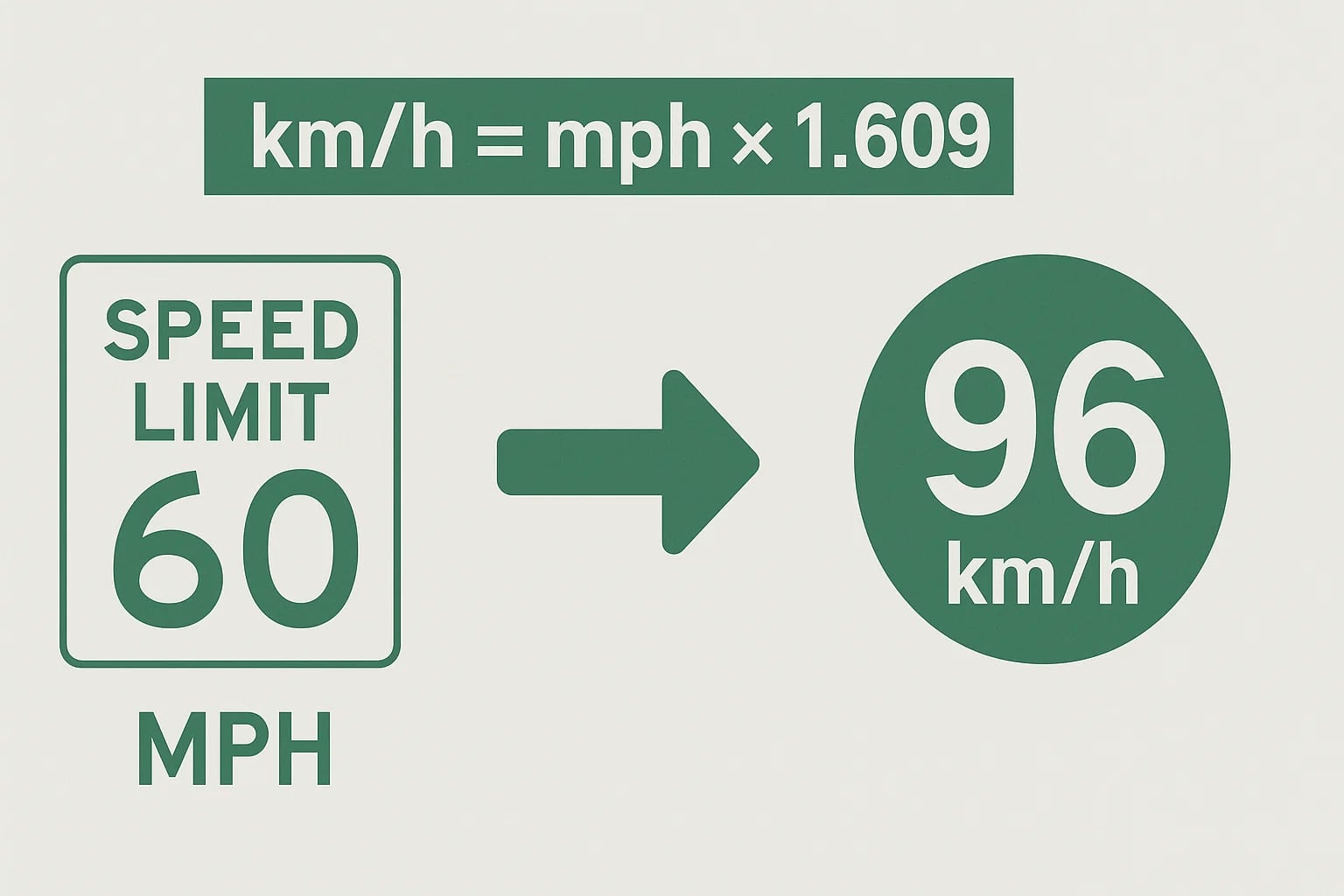mile per hour to kilometer per hour – How to convert mph to km/h
The mile per hour (mph) is a familiar unit in the United States and the United Kingdom, while the kilometer per hour (km/h) dominates in most other parts of the world. If you’ve rented a car abroad, watched Formula 1, or tracked weather reports, you’ve likely needed to convert mile per hour to kilometer per hour. This simple conversion helps compare speeds seamlessly across countries and contexts.
What is a mile per hour (mph)?
A mile per hour measures the distance traveled in miles within one hour. It remains the standard speed unit in the U.S. and U.K., appearing on speed limits, vehicle dashboards, and aviation records.
What is a kilometer per hour (km/h)?
A kilometer per hour shows how many kilometers are covered in an hour. It is the globally recognized unit for traffic, railway speeds, and high-speed travel across Europe, Asia, and beyond.
How to convert mile per hour to kilometer per hour
Kilometer per hour (km/h) = Mile per hour (mph) × 1.609
Example:Kilometer per hour = 60 mph × 1.609 = 96.54 km/h

If you’d like quick answers, the Speed Converter makes mph-to-km/h calculations instant. You can also explore more in the Conversion Tools library.
Do you know?
-
About mile per hour: The fastest recorded baseball pitch reached 105.1 mph. That’s nearly 169 km/h — faster than many commuter trains.
-
About kilometer per hour: The French TGV test train set a record of 574.8 km/h in 2007. Converted, that’s about 357 mph, faster than many small aircraft.
When Cars Met Metrics
In the 1970s, the U.K. debated switching from mph to km/h as part of metrication. While road signs and driver habits remained in mph, many car manufacturers began offering dashboards with both units. This was partly to accommodate export markets where km/h dominated.

The result? Drivers in the U.K. started seeing dual scales, with mph in bold and km/h in smaller print. That visual reminder highlighted the global divide in measurement systems — and the need for quick, reliable conversion. Even today, cars worldwide often show both mph and km/h on the same speedometer, bridging two systems with one dial.
A Formula That Connects Worlds
Converting mile per hour to kilometer per hour is more than a formula — it’s a bridge between cultures. Multiply mph by 1.609, and you can compare American highways with European motorways or track storms reported in different units. From sports fields to high-speed rail, this conversion ensures that no matter where you are, speed speaks the same language.

